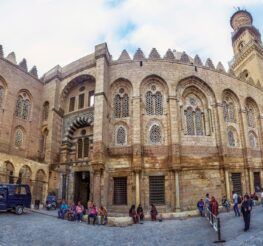Fever Dream: Sons, Mothers, and the environmental Apocalypse in Between
arts and culture book review Books cairo egypt Fever Dream
Nada Medhat
In a rural hospital clinic somewhere in Argentina lay a dying woman and a young boy forcing her to narrate a series of previous events.
This is all the reader knows from the first few pages of the Argentine novella Fever Dream (Original: Distancia de Rescate). The dying young woman, Amanda, is not the boy’s mother. David, the boy, shuts down all questions she asks about her own daughter, Nina. “That’s not important,” he says and repeats so many times that one gets the sense that it’s only this strange boy dictating what matters in life and what doesn’t.
The novella is solely in dialogue form; it’s almost claustrophobic as the woman can’t even see around her, not even the boy sitting at the foot of her bed. Thus, we, the readers, see nothing either. Author Samanta Schweblin throws you in the midst of a fever dream, hence where the book got its translated title from. Amidst the surreal, bizarre features of this fever dream, the reader stumbles in the dark, led only by the strong voices of those two characters, only distinguished between one another by the use of Italics, as they become the only thing to latch onto in this abyss.
However, this in no way means there’s not a story there. On the contrary, the story has a crucial sense of urgency and; the woman is dying, after all, and she has very little time to tell and to understand why she’s there, why she’s dying, and how everything relates together.
“It’s the worms,” David tells Amanda, urging her to tell the whole story, “You have to be patient and wait. And while we wait, we have to find the exact moment when the worms come into being . . . It’s very important, it’s very important for us all.”
Samanta Schweblin’s gripping language never lets go of you. So even when the reader isn’t sure how the story narrated by Amanda relates to the current situation, if it does at all, you still won’t be able to put the book down.
Despite the format of the novella, it’s still visually strong. The images Amanda recollects are evocative and lingering; the pool, the gold bikini that Carla, David’s mother, wore, the landscape of rural Argentina, the horses David’s father had.
David’s mother is crucial to the story, too; everything starts with her. The worms, as David calls them. Six years prior to the events of the story, David drank from a stream and got fatally sick, Carla tells Amanda, and Amanda now retells him. There was no time to save him by any conventional means, and so his mother took him to what the town’s inhabitants call the Green House, where a psychic lives.
It’s where the story gets an otherworldliness to it. To save David, the psychic splits his soul, and another one comes to inhabit his body. Afterwards, Carla says, the boy wasn’t her son anymore; he was a cold, unresponsive, strange being. After, as shown in Amanda’s narration, she starts to see “strange children” everywhere, young boys and girls who are deformed, covered in spots, sick.
Despite the otherworldliness, such a nightmare has become a reality to those characters, which isn’t merely a metaphor for how terrible and scary things suddenly became, rather it’s the strange logic of nightmares that dominates the novella. However, it’s still grounded in reality, no matter how strange.
Two things in particular cause this effect. The first of which is Amanda’s relationship with her daughter, dominated by what Amanda calls “rescue distance” (and which gives the work its original title). “It’s because sooner or later something terrible will happen. My grandmother used to tell my mother that, all through her childhood, and my mother would tell me, throughout mine. And now I have to take care of Nina.”
The thread of “rescue distance” between mother and daughter getting broken is what sets up most of the tension in the story, and everything is felt two-fold through Amanda, a mother figure. “It was the rescue distance: it didn’t work, I didn’t see the danger.”
The “something terrible, the danger” that Amanda couldn’t see is the other grounding factor in the story and overall the environmental problem in Argentina. Although the story could be set anywhere, the pesticide in some towns in Argentina is particularly horrific. The water is so contaminated, many children are born with birth defects, and it’s where the author takes her inspiration.
“I tried to give a subtle meaning, really subtle, about this idea that if there is an end of the world, it will begin with a mom,” the author says, “It might be the beginning of something really deep, where a simple question helps you know where the evil starts—and if you know where the evil is, you can fight against it. When that happens, everything becomes dangerous. In some ways, that’s why the “rescue distance” gets broken: Everything in the world Amanda inhabits is dangerous.”
The horrific is real, and the real is horrific, and it all causes a feverishness so much so that you’ll feel it lingering on your skin long after you’ve finished the novella.
recommended
 Arts & Culture
Arts & Culture
The Coptic Museum: The History of Egypt to the Tunes of Psalms of David
arts & culture cairo museums +4 Health & Fitness
Health & Fitness
Egyptians in the 2024 Summer Olympics
Egyptians in the Olympics Olympics +1 City Life
City Life
Weekend Guide: Bazar by Sasson, Memo, The Cadillacs, Heya Bazaar, Dou, Nesma Herky & More
Concerts The Weekend Guide +2 Arts & Culture
Arts & Culture

